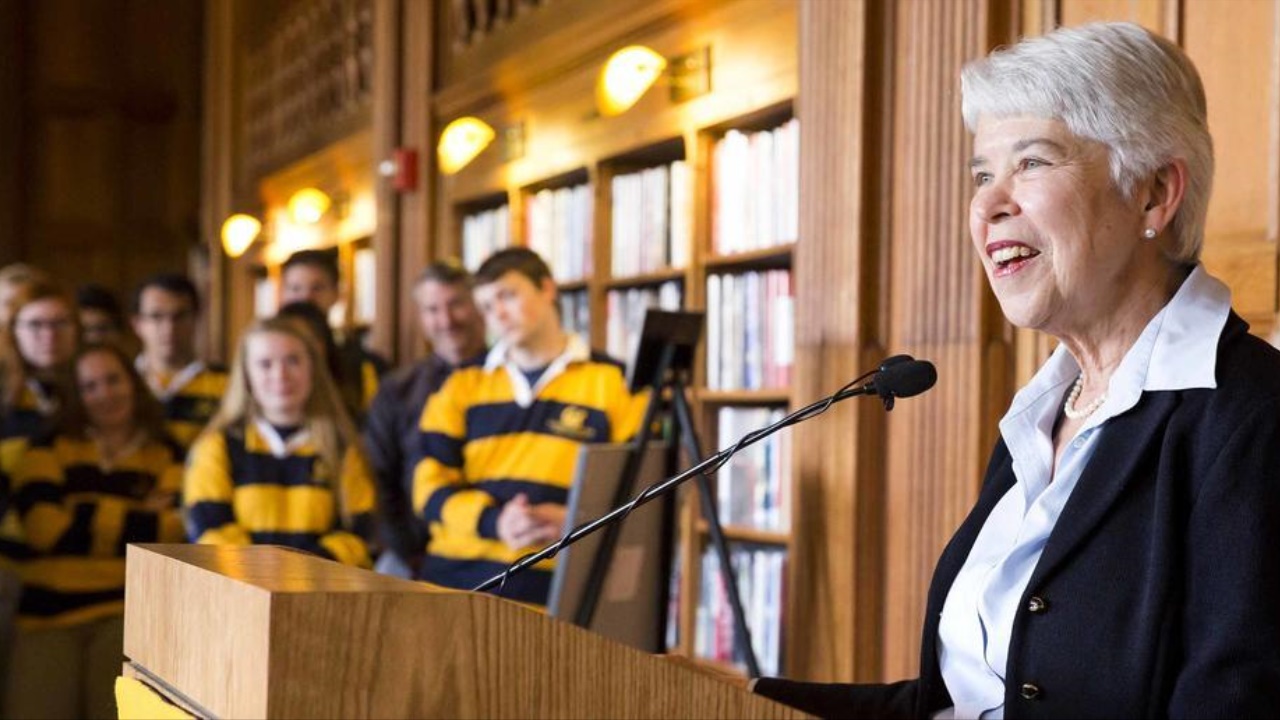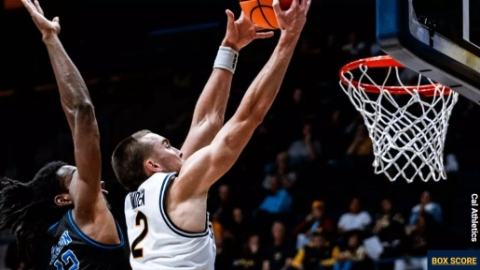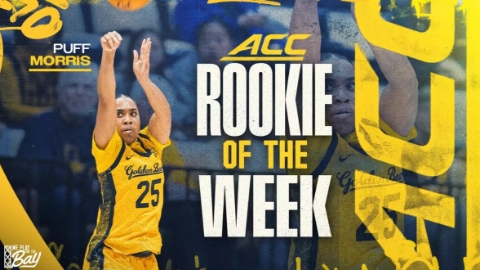Finally.
Chancellor Christ Highlights Plans Going Forward as AD Hiring Nears

The following is a statement offered by Chancellor Carol Christ:
Now that external consultants have finished their detailed review of our intercollegiate athletics program and submitted a number of valuable findings and recommendations, I am writing to provide an update to the Berkeley campus and alumni communities on my plans and intentions.
Intercollegiate athletics (IA) at Berkeley has been relentlessly studied for more than two decades by a combination of eight committees and task forces and by two consulting firms. Yet, the results have been less clear than one might expect, given the extent of these repeated studies. The reason, I've come to believe, lies in a certain reluctance to confront contradictions among the various goals the campus holds for itself and Cal Athletics. The most recent report by the Task Force on Intercollegiate Athletics, released in June 2017 by the previous administration, said it well: “IA cannot simultaneously satisfy the three following conditions: balance its budget, assume sole responsibility for the debt service on the football stadium project, and maintain the current size and scope of its program.” That task force saw a need for an independent analysis of the athletic program’s finances and operations and proposed that the campus engage a consulting firm that could make recommendations for achieving a sustainable financial model. We subsequently contracted with Collegiate Sports Associates (CSA), one of the most respected firms in the country, to perform that work. (The costs were paid by donors). This happens to be the first time IA has been reviewed by a consultancy with specialized expertise in collegiate athletics programs. From the very beginning, CSA’s experts displayed a sophisticated and nuanced understanding not only of IA, in general, but also of Berkeley’s unique attributes, challenges and opportunities. They conducted more than 122 interviews with the broadest possible range of stakeholders, reviewed all previous reports and studies and carefully compiled and reviewed data from Cal Athletics, the NCAA, the PAC-12 conference and a number of our peer institutions.
We have received CSA's report, and I am releasing it to the Berkeley community.
In this memo, I articulate the principles that will guide my decisions in regard to athletics and describe our path forward. I believe that IA offers great value both to our student-athletes and to the campus community. It gives our students the opportunity to compete in
their sports at the highest level and to develop the qualities of mind and character that highly disciplined, team-based sports build. It offers students, faculty, staff, alumni, parents and friends of the university unique opportunities to come together as a community, one of the ways we feel our institutional spirit and identity. And for many of our alumni, sporting events play an indispensable role in their continuing relationship with, and support for, our university. These are just some of the reasons sports are an important part of the American collegiate experience. I believe Berkeley can and will have an intercollegiate athletics program that reflects and embodies the aspirations and excellence that characterize our university as a whole. The core of our commitment to athletics must be the student-athlete experience — the opportunities afforded students both in their sports and in their academic programs, their success in the classroom and their development as individuals in all aspects of their character and experience. Timely graduation rates are a critical measure of IA's success, as are the fullness and rigor of our athletes' academic programs. Of course, we want our teams to win, but even more we want every student-athlete to thrive at Berkeley, to have the best university education we can offer. Just as we expect IA to operate with the highest level of integrity and care for students’ welfare, the campus must hold itself to equally high standards for their education, as it does for all students. Another core principle of our IA program is gender equity. In terms of student-athlete participation, Title IX provides universities and colleges with three options, or “prongs,” when it comes to compliance with the law. (You can read more about the prongs here.) Because of our commitment to gender equity, I have decided to move from Prong 3 to Prong 1 compliance by 2021 in order to provide equitable participation for our male and female students and to meet our obligations under Title IX. (An institution satisfies Prong 1 by providing substantially proportionate participation opportunities for its male and female student-athletes, consistent with the percentage of men and women in its full-time undergraduate student body population. Prong 3, on the other hand, supports gender equity by requiring schools to add sports for the underrepresented gender whenever there is sufficient student interest, ability and opportunity for intercollegiate competition, according to a set of specified criteria). To me, maintaining an athletics program that is substantially proportionate to our undergraduate population seems more consistent with Title IX's defining goal of gender equity.
Moreover, because Cal Athletics already struggles to support 30 sports, it seems unwise to continue with a compliance prong that requires us to add more sports whenever the aforementioned criteria are met.
Moving to Prong 1 without adding sports will likely require a reduction in roster spots for men's sports. I have asked for an analysis of what the actual impact of this change will be when we make the transition in 2021, and we will share that information when it is ready. In addition, we must make a commitment to gender equity in our facilities for men's and women's sports. Most immediately, this will involve building courts for beach volleyball (our most recently added sport) and improving our facilities for softball. I now turn to the budget and the financial model for IA. I believe that continuing deficits in any campus unit, like those in IA, are corrosive. They erode trust and fiscal responsibility even when they stem not from fiscal or administrative mismanagement, but from structural factors — an imbalance, as in the case with IA, between available revenues and the program’s size and scope. Because of the multiple risks of continuing to carry IA deficits — both for the campus and for the department itself— I am requiring IA to achieve a balanced budget by 2020, when UC Berkeley must balance its budget.
A plan to balance the budget will have the following five elements: First, I have already announced that the campus will take responsibility for the portion of the football stadium debt that is related to the cost of seismic retrofitting and construction. The seismic safety of our facilities, particularly one used as extensively by the campus community as California Memorial Stadium, is a campus responsibility. Beyond that, key decisions regarding the original financial model for the stadium were made by campus and IA leadership together, and thus there should be shared accountability for the results.
Second, as part of a broader campus-wide effort, I will review and seek to simplify how funds flow back and forth between IA and the campus. The opacity of IA’s finances results, in large part, from the complexity of transfers between the department and the campus central ledger. Although IA receives an annual allocation from the campus, it also contributes revenue back to the campus in a variety of different ways. I will review thissystem with the goal of simplifying and rationalizing it. Third, IA will develop a plan to substantially increase its revenues. The key to a sustainable financial model for IA, as for the campus, lies in increasing and diversifying revenues. The CSA report, like earlier consulting reports, sees significant potential for new revenues. We are, quite simply, underperforming on the revenue front. Football and men’s basketball will be critical to any revenue plan and sustainable financial model because they are the only sports that generate significant revenue. It is therefore essential that we work to support the consistent, competitive success of these two athletic programs and provide a high-quality game day experience for fans and supporters. In addition, facilities and advertising agreements offer further significant revenue opportunities. We are also examining alternate uses of real estate in IA’s current control. For example, we are in the early stages of planning and analysis for future uses of Edwards Stadium.
Beyond the need to find new facilities for the teams that currently use that venue, a number of interesting and exciting ideas have been proposed for Edwards Stadium that warrant careful examination. Here, too, I am committed to sharing updates with you as our work proceeds. Fourth, we must increase philanthropic support. We are underperforming in the area of philanthropy. Our upcoming campaign gives us an excellent opportunity to increase support for athletics. I believe that a sustainable, realistic and transparent financial model for IA, along with the implementation of other recommendations offered in the CSA report, will enable us to rebuild and strengthen the relationship between Cal Athletics and the many donors who care deeply about the program, our student-athletes and our university.
The final step in developing a balanced budget and a sustainable financial model for IA is reviewing the program’s size and scope. Cutting sports, or transitioning them to club status, should be a last resort. We should not take this step until we assess the impact of reforming the way in which funds flow between the campus and IA and until we have a better sense of the extent to which improved revenue generation and philanthropic support will address the athletic program’s budgetary challenges. With clarity about what must now be done, I look forward with great anticipation to our selection of a new athletic director — an essential
partner who will ensure that we make good on these principles and the full range of CSA’s findings and recommendations. I am very pleased with the level of interest this opening generated across the country; the candidate pool is deep and impressive. I am certain that in April we will be introducing a person with the necessary skills and experience to help us build an intercollegiate athletics program that is both financially sustainable and capable of serving the needs and interests of our student-athletes. I am confident that, together, we can usher in a new era of excellence for Cal Athletics that is consistent with and supportive of our university’s mission, standards and values.




